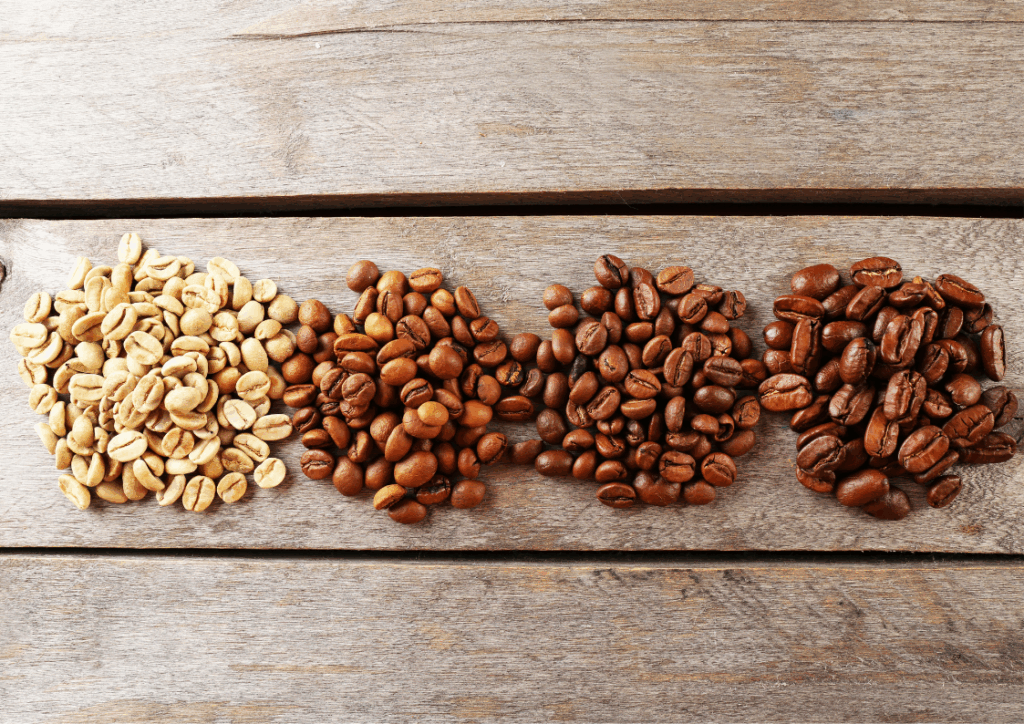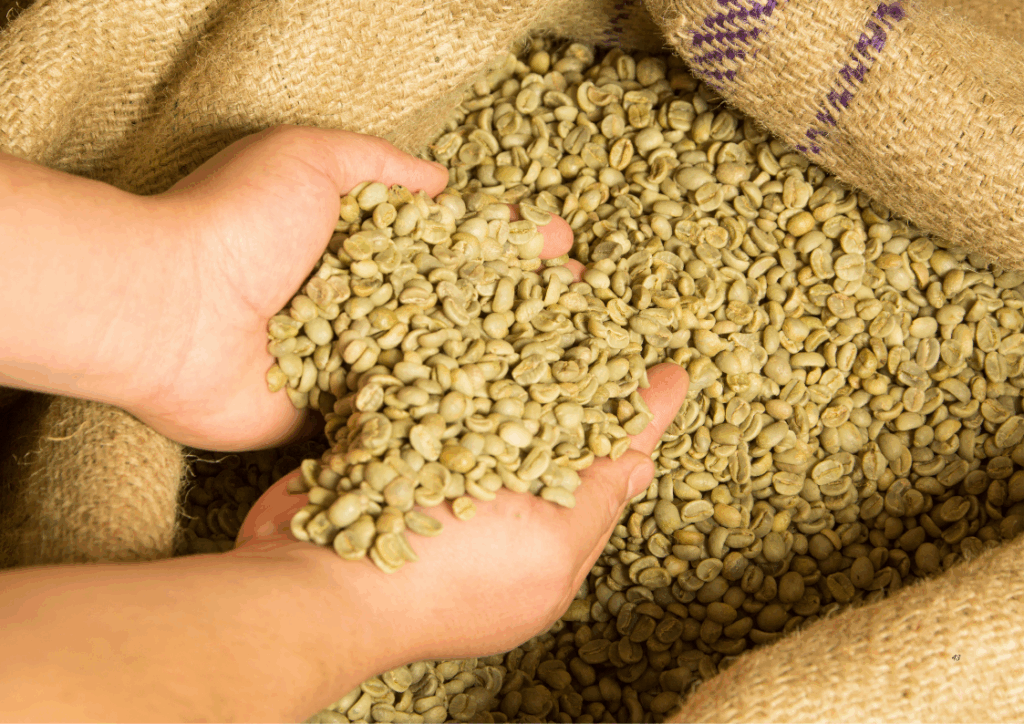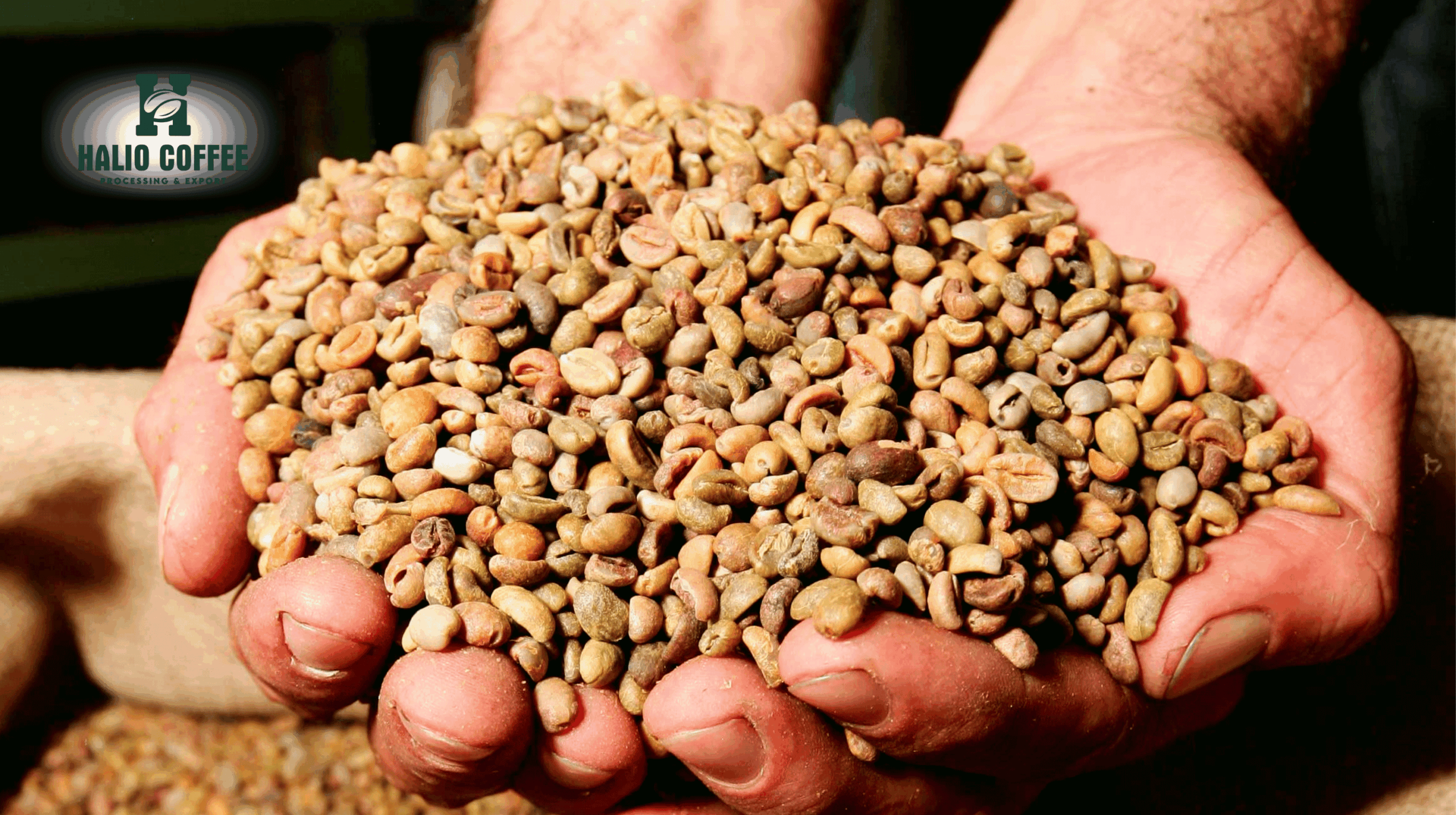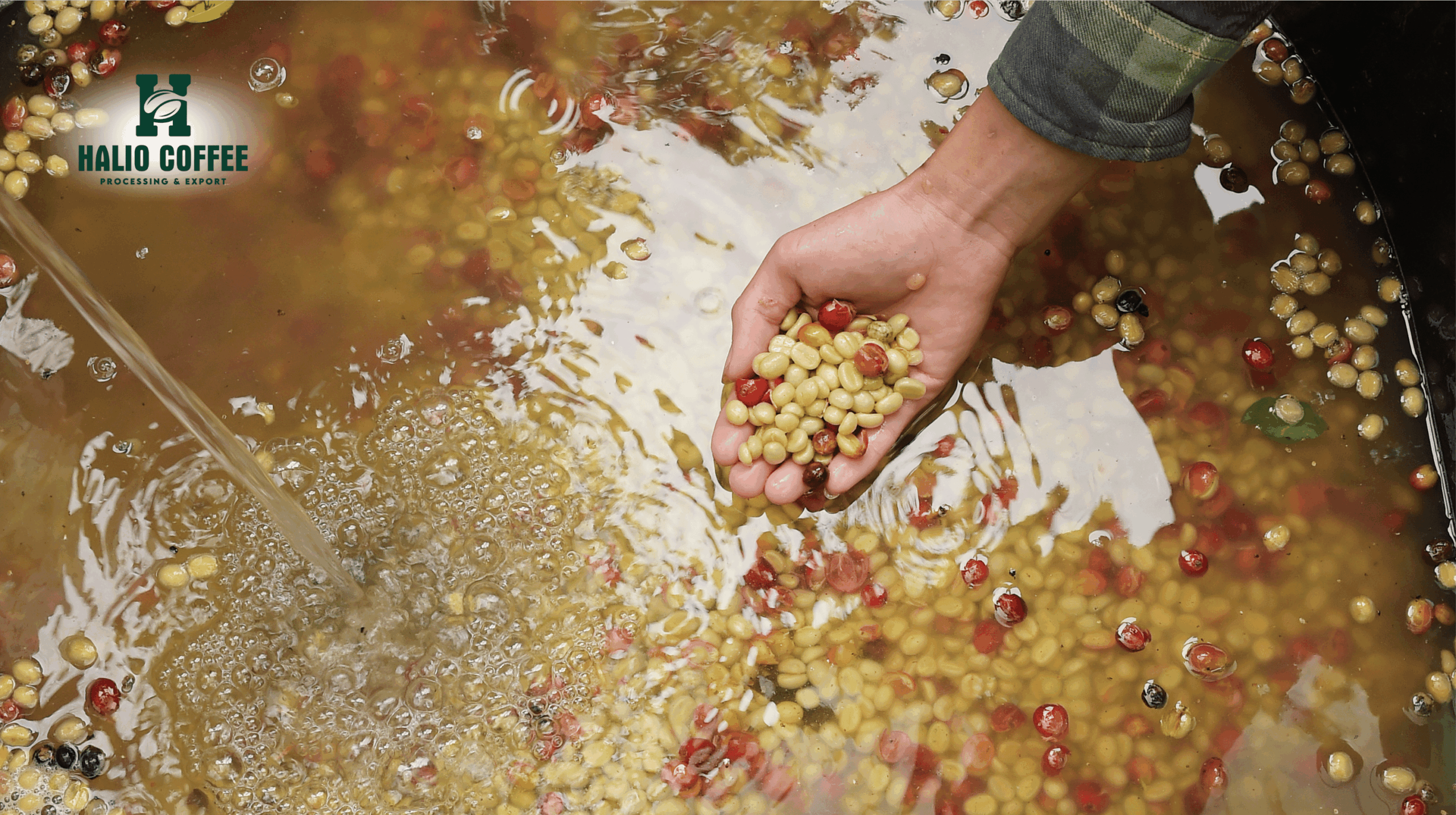Dry Process Coffee: Unlocking the Fruit-Forward Complexity of Green Coffee Beans from Vietnam
For coffee roasters, manufacturers of coffee-based products, and discerning coffee distributors, understanding the nuances of coffee processing is paramount to sourcing exceptional beans. Dry Process Coffee, also widely known as “Natural Process Coffee,” stands as the most ancient and often the most flavor-intensive method of preparing green coffee. Originating in regions with limited water resources, this method profoundly influences the resulting cup profile, making it a highly sought-after category in the specialty coffee market. From Buon Ma Thuot, Dak Lak, Vietnam, we explore the science, characteristics, production, and market implications of Dry Process Coffee, with a specific focus on its growing prominence in Vietnam’s evolving coffee landscape.
1. The Art and Science of Dry Process Coffee
Dry Process Coffee involves drying the entire coffee cherry (fruit) with the seed inside, allowing for a unique interaction between the fruit’s sugars and the developing coffee bean. This interaction is key to its distinctive flavor profile.
1.1 The Dry Process Steps
The meticulous execution of dry processing is crucial for quality, as improper handling can lead to significant defects. Key steps include:
- Selective Harvesting: The most critical initial step is to only pick fully ripe, red coffee cherries. Unripe cherries can introduce undesirable grassy or astringent notes, while overripe ones might lead to excessive fermentation. In Vietnam, this is increasingly done manually for specialty lots.
- Initial Sorting: Freshly picked cherries are sorted to remove any under-ripe, over-ripe, damaged, or defective cherries, as well as leaves, twigs, and dirt. This can be done manually or through flotation (where good cherries sink and bad ones float), often at centralized processing stations.
- Drying (The Core of the Process): The whole, intact coffee cherries are spread out in thin, even layers to dry. This takes place on:
- Raised Drying Beds (African Beds): These elevated structures, often with mesh bottoms, allow for consistent air circulation around and through the cherries. This method is increasingly preferred for specialty Dry Process Coffee in Vietnam as it promotes even drying and reduces the risk of mold, especially given the country’s humidity.
- Patios: Large concrete or brick surfaces where cherries are spread. While traditionally common, it requires more labor for constant raking and can be prone to uneven drying if not managed meticulously.
- Constant Raking and Turning: Throughout the drying period (which can range from 2 to 4 weeks depending on climate and desired profile), the cherries must be consistently raked and turned. This prevents mold growth, ensures even drying, and promotes uniform flavor development within the beans.
- Moisture Content Monitoring: The cherries are dried until they reach an optimal moisture content, typically 10-12.5%. Precision in this stage is vital; under-dried beans risk mold and spoilage, while over-dried beans can become brittle and fracture during hulling, impacting the final quality of the Dry Process Coffee.
- Hulling (Dry Milling): Once adequately dried, the cherries resemble dried raisins. They are then sent to a dry mill, where specialized machines remove all the dried outer layers (skin, pulp, parchment, and silverskin) to reveal the green coffee bean.
- Final Sorting and Grading: The green beans are sorted by size, density, and color, and any remaining defects are removed (often by hand), before being bagged for storage and export.
1.2 The Fermentation Factor
During the prolonged drying period, the fruit pulp and mucilage surrounding the bean undergo a natural fermentation process. This interaction allows the sugars, acids, and other compounds from the fruit to penetrate and influence the flavor development within the coffee bean itself. This natural enzymatic activity is what imparts the distinct fruit-forward and often sweeter characteristics to Dry Process Coffee.
See more:
- Arabica Natural Processed Coffee Beans
- Natural Coffee Flavor Profile
- Halio Coffee – Your Trusted Fresh Coffee Distributor of Robusta & Arabica Beans
2. The Distinctive Flavor Profile of Dry Process Coffee

The flavor profile of Dry Process Coffee is its defining characteristic, setting it apart from other processing methods.
2.1 Sensory Attributes
- Intense Fruitiness: This is the most prominent feature, with notes ranging from dark berries (blueberry, strawberry, raspberry) to tropical fruits (mango, passionfruit) or stone fruits (peach, apricot). The fruit notes can be jammy, winey, or even boozy depending on the specific processing and origin.
- Fuller Body: Dry processed coffees typically exhibit a heavier, rounder, and often syrupy body, contributing to a more luxurious mouthfeel.
- Lower Acidity: Compared to washed coffees, the acidity in naturals tends to be more subdued, wine-like, or malic rather than bright and crisp.
- Increased Sweetness: The sugars from the dried fruit are absorbed by the bean, resulting in a naturally enhanced sweetness.
- Complex Aromatics: Beyond fruit, naturals can develop intricate aromas of chocolate, nuts, spices, and sometimes a distinct “ferment” character that, when managed well, contributes to complexity rather than defect.
- Cleanliness (Variable): While top-tier Dry Process Coffee can be remarkably clean, those less meticulously managed may exhibit slight “funky,” earthy, or savory notes. These are sometimes embraced as part of the natural profile but can also be considered defects if excessive.
2.2 Global Variations and Examples
- Ethiopia: Often considered the birthplace of natural processing, Ethiopian dry process coffees (e.g., from Yirgacheffe, Sidama, Harrar) are famous for their vibrant blueberry and floral notes.
- Brazil: A major producer of dry process coffee, Brazilian naturals often feature heavy body, low acidity, and prominent chocolate, nut, and sometimes subtle stone fruit or red berry notes. They are frequently used as a base for espresso blends.
- Yemen: Historically a dry process origin, known for its unique, sometimes wild, fruity, and spicy notes.
- Vietnam: While traditionally known for Robusta, Vietnam’s Arabica sector is increasingly producing high-quality dry process coffees, particularly from the Lam Dong province (Cau Dat). These Vietnamese naturals are gaining recognition for their balanced sweetness, tropical fruit hints, and robust body.
3. The Role of Dry Process Coffee in Vietnam’s Coffee Market

Vietnam, predominantly a Robusta producer, is making significant strides in its Arabica sector, with Dry Process Coffee becoming a key element in its diversification strategy for specialty markets.
3.1 Arabica Growing Regions in Vietnam & Dry Process Potential
- Lam Dong Province (Cau Dat, Da Lat): This is the leading Arabica region in Vietnam, with elevations ideal for specialty coffee cultivation. Farmers and processing stations here are actively experimenting with and refining dry processing for varietals like Catimor, Typica, and Bourbon. The drier harvest season in some parts of Lam Dong lends itself well to this method.
- Northwestern Provinces (Son La, Dien Bien): These emerging Arabica regions are also exploring dry processing, often on a smaller scale, to highlight unique regional characteristics.
3.2 Vietnamese Advancements in Dry Processing
Vietnamese producers are investing in techniques to elevate the quality of their Dry Process Coffee:
- Increased Use of Raised Beds: Moving away from ground-level drying, which is prone to uneven drying and contamination, to raised African beds, ensuring better air circulation and more controlled fermentation.
- Enhanced Sorting Protocols: Implementing stricter pre- and post-drying sorting to eliminate defects, both mechanically and manually, ensuring cleaner lots of Dry Process Coffee.
- Precise Moisture Management: Utilizing modern moisture meters and developing expertise in managing drying curves to achieve optimal moisture content without over-drying or under-drying. This scientific approach to drying is crucial for quality and consistency.
- Focus on Micro-lots: Producing smaller, carefully managed micro-lots allows for greater control over the intricate dry processing method, leading to higher quality and unique flavor profiles that appeal to the specialty market.
4. Strategic Implications for Businesses Sourcing Dry Process Coffee

For roasters, manufacturers, and fresh coffee distributor companies, integrating Dry Process Coffee into their portfolio offers distinct advantages and specific considerations.
4.1 Benefits for Businesses
- Product Differentiation: Dry process coffees offer highly distinct and often more exotic flavor profiles, allowing businesses to create unique blends or single-origin offerings that stand out. This caters to the growing consumer demand for novel and exciting coffee experiences.
- Enhanced Flavor in Blends: The natural sweetness and fruitiness of dry process coffees can add complexity and balance to blends, reducing the need for other flavor additives and providing a rich base.
- Value-Added Category: Specialty-grade dry process coffees often command premium prices due to their unique sensory attributes, labor-intensive production, and higher associated risks, leading to better margins for businesses.
- Compelling Storytelling: The traditional and artisanal nature of dry processing, combined with the origin story from specific farms in Vietnam, provides rich narrative material for marketing and consumer engagement, resonating with consumers seeking transparency and ethical sourcing.
- Reduced Water Footprint: Natural processing uses significantly less water than washed processing, appealing to environmentally conscious consumers and supporting sustainable sourcing initiatives, which is a growing trend.
4.2 Challenges and Considerations
- Quality Consistency Risk: Dry processing is highly dependent on climate and meticulous handling. Buyers must engage with reputable Arabica Coffee Suppliers who have proven quality control systems specifically for naturals. Rigorous sample evaluation and a clear understanding of defect tolerances are essential.
- Potential for Defects: The extended contact with the fruit pulp means a higher risk of off-flavors (e.g., musty, sour, overly fermented) if not processed correctly. Diligent cupping is required.
- Storage Requirements: Dry Process Coffee green beans can be more sensitive to improper storage, potentially losing their vibrant fruit notes or developing unwanted flavors. Proper packaging (e.g., GrainPro bags) and controlled warehouse environments are crucial for preservation, which a reliable fresh coffee distributor should guarantee.
- Price Premium: Due to the increased labor, risk, and specialized care involved, high-quality dry process coffees are typically more expensive than commodity-grade washed coffees.
- EUDR Compliance (for EU markets): Like all coffee, Dry Process Coffee entering the EU must comply with the EU Deforestation Regulation (EUDR) (effective December 2024). Suppliers must provide transparent, verifiable farm-level traceability data to prove deforestation-free sourcing for every batch.
5. Sourcing High-Quality Dry Process Coffee from Vietnam
As Vietnam’s specialty coffee industry matures, sourcing high-quality Dry Process Coffee from the country becomes an increasingly attractive option for global buyers.
- Seek Specialized Vietnamese Exporters: Partner with exporters who have a clear focus and expertise in specialty Arabica and who have specifically invested in high-quality dry processing methods (e.g., using raised beds, strict sorting protocols).
- Request Comprehensive Samples and Cupping Reports: Always request samples from specific lots, accompanied by detailed cupping notes and green bean analysis reports (moisture, density, defect count). Conduct your own blind cuppings to verify quality and flavor profile against your standards.
- Inquire About Processing Protocols: Ask for specifics on the drying methods, duration, and quality control steps employed for the Dry Process Coffee lots you are interested in. This level of detail indicates the supplier’s commitment to quality and transparency.
- Verify Packaging and Logistics: Ensure the supplier uses appropriate packaging (e.g., GrainPro bags) to preserve bean integrity during shipping and has reliable logistics for timely delivery to your location. A trusted fresh coffee distributor can provide local market insights and logistical support.
- Build Relationships: Developing strong, long-term relationships with Vietnamese suppliers allows for greater transparency, consistency, and potential for custom processing or exclusive micro-lots in the future.
Conclusion
Dry Process Coffee stands as a testament to the transformative power of traditional processing methods, yielding green coffee beans with distinctive, fruit-forward, and often intensely sweet flavor profiles. As Vietnam continues its journey as a rising force in specialty coffee, its commitment to refining the dry process for its Arabica beans offers exciting opportunities for global roasters, manufacturers, and distributors. By understanding the intricacies of this method, recognizing its unique sensory characteristics, and diligently navigating the strategic sourcing considerations, businesses can unlock the full potential of Dry Process Coffee from Vietnam, enriching their product lines and catering to a sophisticated and evolving global coffee palate.
- Robusta and Arabica Prices Surge as Cold Front Threatens Brazil Crop
- Raised Bed Drying Coffee: A Key Technique in Modern Coffee Production
- How to Vet Vietnamese Coffee Suppliers
- Dry Process Coffee: Unlocking the Fruit-Forward Complexity of Green Coffee Beans from Vietnam
- The Heart of Robusta: A Buyer’s Guide to Vetting Dak Lak Coffee Suppliers







